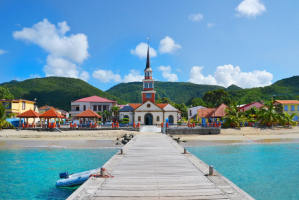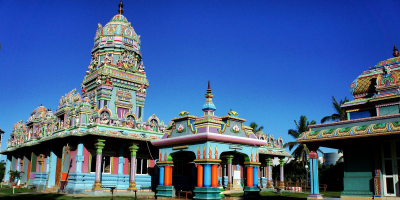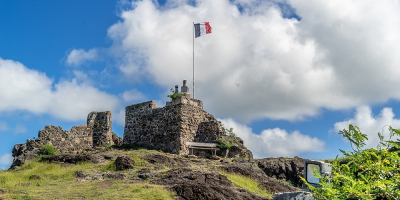Top 4 Most Beautiful Historical Sites in Guadeloupe (France)
The archipelago is part of the Antilles located in the Caribbean Sea, France and consists of five main islands - Guadeloupe, Marie-Galante, La Désirade, and ... read more...Îles des Saintes as well as many other small uninhabited islands. Although not as popular as the surrounding areas, Guadeloupe is a truly beautiful and relaxing destination. From sunny beaches to shady mountains. Guadeloupe island is considered a postcard-shaped Caribbean island with all of France's amenities. Here, visitors will be able to see the dreamlike scenery, the hikes in colorful villages, the salty creole food, and the joie de vivre of the indigenous people. This end of the world France is really popular with tourists from the mainland and having it will definitely steal our hearts. Besides beaches and mountain ranges, Guadeloupe is also famous for many long-standing historical sites. Here, visitors can experience and learn more about its history and culture. What are we waiting for? Let us explore the 4 most beautiful historical sites in Guadeloupe with the Toplist right now!
-
Fort Delgres, a stone circle on the slopes of a Caribbean volcano that honors the leader of the fight against slavery is a must-visit destination for Guadeloupe.
Louis Delgrès, a free black man born in Guadeloupe, staged a furious uprising against Napoleon's General Antoine Richepanse in 1802, to prevent the return of slavery to the Caribbean, French. Louis Delgrès was an outstanding soldier in many battles for the French idealist. Although repeatedly arrested and escorted to England as a tortured prisoner, Delgrès never surrendered. When General Richepanse was sent by Napoleon Bonaparte to Guadeloupe to restore slavery, leading an armed revolt of civilians and soldiers of color.
Unfortunately, Delgrès and his 400 comrades were defeated by the French army, they were forced to retreat to this fortress, hide in a volcanic plantation, then commit suicide. After the failure, slavery was restored, but it is thought that the failure of the uprising drove the successful liberation struggle in Haiti. The fortress where he last stood is now named for him, more than 300 years later. As for General Richepanse, he fell ill shortly after the war and died a few weeks later. Today, his body is also buried in the military cemetery at the top of the fortress complex.
Located on the capital suburbs of the small hillside of Guadeloupe, Basse-Terre, Fort Delgres offers stunning views of volcanoes as well as the towns and oceans surrounding the island. This fortress was built in 1649 and was referred to as Fort St. Charles by Governor Charles Houël.
As have many other places in the Caribbean, Fort Delgres has been referred to as the Royal Fort and Fort Richepanse, as it has changed hands multiple times between the French and the British. In 1989, the island's governing board decided to vote to officially rename the fortress after the commander of the heroic rebellion, Louis Delgrès.
Fort Delgres is basically quite similar to these colonial-era stone fortresses, but one of the most important and special markings that make visitors fall in love with this place is the Louis Delgrès monument which is well worth a visit. It is like a sort of meditation maze meeting Stonehenge, with the head statue of Delgrès in the center. If we get close to stone spiral circles, we will see some engravings with the words "Liberte" and "Justice" on the rocks.
One tip that Toplist wants to show visitors before starting to visit one of the 4 Most Beautiful Historical Sites in Guadeloupe is that it is really necessary for visitors to remember to bring a google translation phone or vocabulary book as there is only signboard led in French. And of course, the entrance fee is free for all visitors. It is also one of the few attractions that are open from Sunday to 4:30 pm.
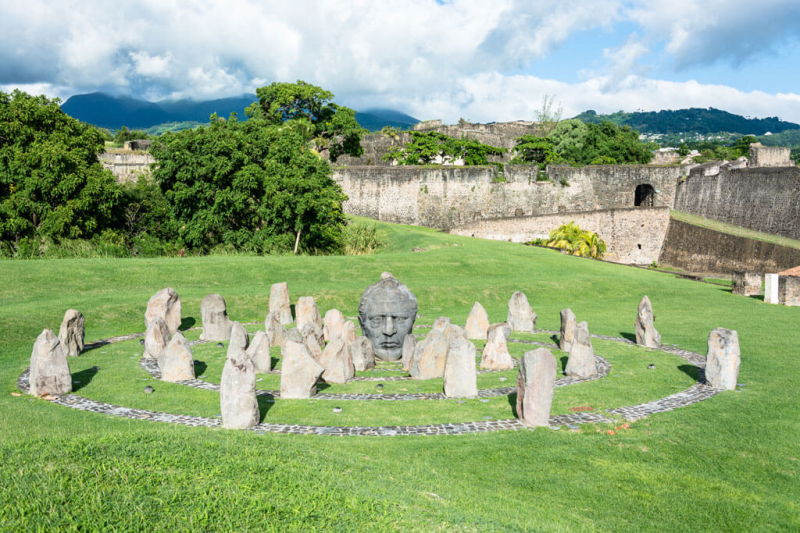
Photo: 123rf.com Video: Discover The World -
Upon visiting the island visitors will encounter Fort Napoléon, a museum dedicated to Saintes's history, culture, and environment. It was originally constructed as a fortification before being destroyed by British forces in the 1800s and then rebuilt as a prison.
Fort Napoléon is a fortress located on Terre-de-Haut Island, in Îles des Saintes, Guadeloupe and owned by the Disciplined Council of Guadeloupe. It was designated as a national historic site on December 15, 1997.
The British seized the island of Saintes and a portion of Guadeloupe from 1759 until 1763. As a result, the islands were only restored to France when the Treaty of Paris was signed on February 10, 1763. Not only a front for fierce wars but also terrifying memories of death, in the late seventeenth century, the fortress began to be constructed on the shabby Mire at an altitude of 119 m to sea level for about 2 years from 1777 to 1779. Fort Napoléon was built in a rectangular structure protected by a frame of lime and mortar. It consisted of a barracks for about 45 men and two rainwater tanks along with weapons including two cannons and three mortars aimed at protecting Whale Pass and Terre-de-Haut Road.
After the Treaty of Paris in 1814, Guadeloupe was returned to French possession, Fort Napoléon was rebuilt on the ruins of the old fortress by constructing additional tall surrounding walls and a store of gunpowder. Because of a system that provided a more powerful means of defense, the Civil Affairs Committee of the Ministry of the Navy and Colonies decided to build a real stronghold in 1842.
Napoleon built on more which meant "bluff" from the French Caribbean or also called Mire. Fort Napoléon was originally called Fort Louis. But after being destroyed by British forces in 1809, it was rebuilt in 1867, and named after Napoleon III. However, this fortress was never used in battle but instead served as a prison.
Fort Napoléon has now been altered and converted into a museum devoted to Saintes' history, culture, and ecology. The Jardin Exotique Du Fort Napoléon, a botanical garden specializing in native succulent plants and iguanas, is also located there.
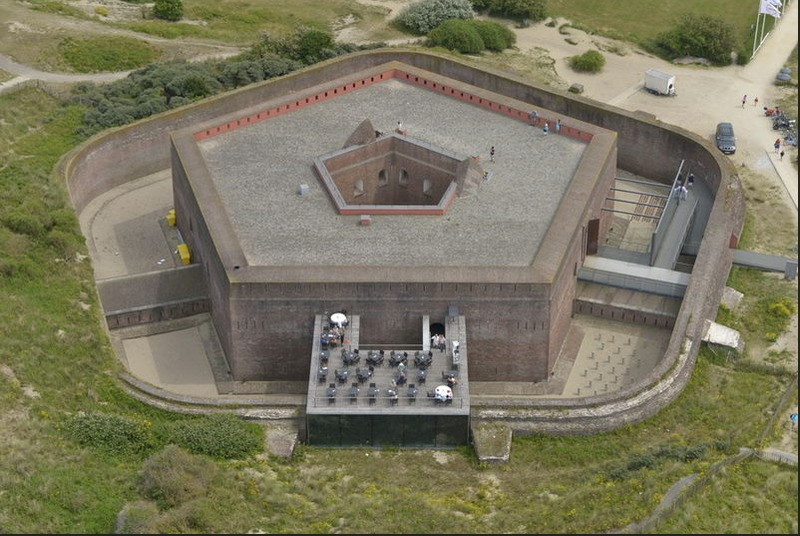
Photo: izi.travel Video: Keiron Webster -
In Point-a-Pitre, Memorial ACTe is a cultural center dedicated to the slave trade's history. It is part of UNESCO's Slave Route Project, which tells the tales of individuals who were forced into slavery in the Guadeloupe Islands, as well as the obstacles and problems they faced. This museum honors individuals who have suffered and promotes positive dialogue about this tragic period in history.
As a representative and memorial for the slave trade and slavery, the Memorial ACTe Center in the Caribbean was inaugurated on May 10, 2015, at the initiative of the Guadeloupe region, with the aim of contributing through Consciousness, culture, and creativity are close to historical wounds, the process of building Guadeloupean society, as well as in the Caribbean and America.
The museum's founding ideas include the goal of offering intellectual tools to combat social repercussions and enslavement, such as racism, social exclusion, inequality, and modern human rights violations, by turning the act of remembrance into a method of establishing a new society.
The museum is made up of two buildings paved with black granite, surrounded by an anodized aluminum maze with majestic lights at night. Figuratively speaking, the museum is like a black box containing a past in which the collective memory has been partially rebuilt. The constellation of quartz fragments on the black face represents millions of lost slave souls, commemorating slavery and the victims of the slave trade.
Memorial ACTe is divided into three sections: the first permanent display area, where knowledge, a second location for exchanging and popularizing ideas, and the third room for contemplation consisting of an 11.5-meter-long, 275-meter-long bridge offering a beautiful walk between the sky and earth, with views of the city of Pointe-à-Pitre, Basse-Terre, and the sea, and also lead visitors to "Morne Mémoire", a garden of about 2.2 hectares where the owner of the house, a vinegar cellar, and a slave cemetery were located.
The Memorial ACTe's permanent display covers not just slavery and the transatlantic slave traffic, but also the history of slavery in general, from ancient times to the current day. Visitors are immersed in the past and relive history in a 1700 m2 area, owing to 37 textbook modules divided into six archipelagos, as well as a gallery of historic portraits. All works and materials on display in the museum have been built and designed by the Guadeloupe Regional Council for the past three years. For every visitor to have the best experience, Memorial ACTe's permanent exhibition offers a journey through time, animated by cutting-edge technologies such as large screens, and multi-experiences. sense. Specifically, from the construction of the Americas to the contemporary period, Memorial ACTe also has a massive database with between 6,000 and 8,000 Guadeloupe family trees. As a result, descendants of Guadeloupe slaves will be allowed to research their forefathers. With so many valuable works and documents, Memorial ACTe deserves to be one of the 4 Most Beautiful Historical Sites in Guadeloupe.
The museum is not only outstanding but also beautiful and innovative, completely consistent with the criteria set by the Council of Europe. Originally intended as a memorial, the museum not only became a lively, dynamic place to commemorate the transatlantic slave trade and intercontinental slavery from the continent of Africa, and America to Europe. This is also a place to commemorate the resilience of slaves who suffer from persecution and hardship. That image fosters tolerance and opens up beautiful prospects in creative ways for the future. In 2017, Memorial ACTe (MACTe) was honored by the Cultural Committee of the Council of the European Parliament (PACE) with the 2017 Museum of the Council Award as the Center for Human Trafficking Expression and Memory and the Slaves of the Caribbean, Guadeloupe (France).
Since 2020, the regional space is dedicated to the display of historical information, knowledge, and research, for residents, tourists, students, and researchers. The Memorial ACTe was maintained as a powerful iconic site, recreating its historical time and exhibiting contemporary manifestations. Despite the focus on the Guadeloupe archipelago and its Caribbean environment, the problem of the slave trade is still being reinterpreted in today's global context.
Here, visitors have a total visit time of 2 to 4 hours to explore and learn about this museum. The late opening hours also make Memorial ACTe a lively arts hub and meeting place for locals. Through six archipelagos made up of 39 islands, upon arrival, you will explore a time-leading journey from antiquity to 1492, from post-Colombian slavery to its abolition, from colonial times to independence until today. Along with that, audio guides are available for the tour in 4 languages: French, Creole, English, and Spanish.
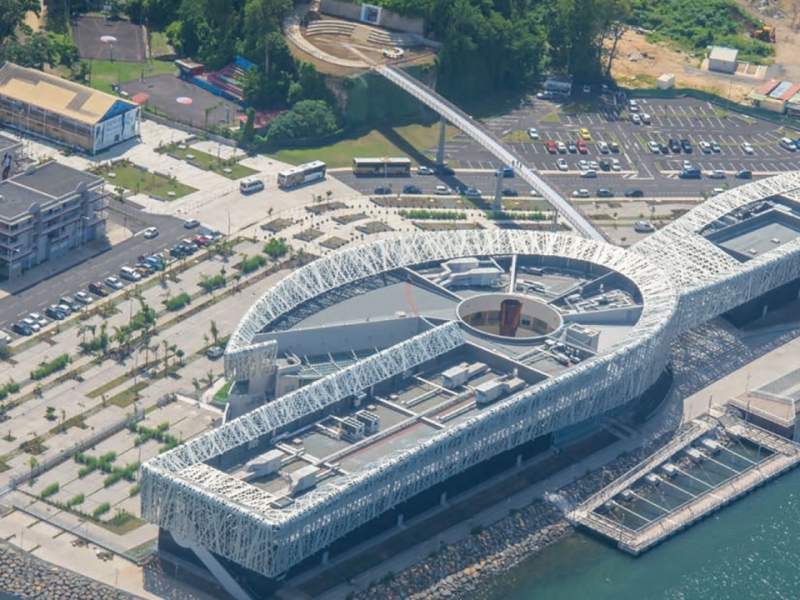
Photo: interentreprises.com Video: Center for French and Francophone Studies at LSU -
Erected in Les Abymes on the hill of the same name formerly known as the Morne Gate, known as the Morne de la Mémoire. At the time, the site also contained the Habitation Dothémare, a former sugar plantation. It was conceptualized by designers Jean Moisa and Alain and marble designer Jean-Marc Bunel.
This monument is made up of five gigantic marble books which are engraved in gold with 1480 the names of the town's slave men and women, who were free to abolish slavery. in 1848. Before that, they were expelled from their lands by the "mechanical power of triangle trade" to suffer slavery in the Abyssian lands. The layout of the Morne de la Mémoire gives it a solemn look in memory of the deceased. It is proof of the study and understanding of a peaceful historical period that still exists and sustains in the conscience of the people here about the sacrifice of the ancestors that made history and pride for indigenous people.
Their ancestors manifested themselves by brave acts to free the life of slavery. Morne de la Mémoire also presents itself as a sacred place dedicated to the rest of the soul, for peace, harmony, and reconciliation. In this memorial space, a baobab tree was planted by Deputy Mayor Eric Jalton during his inauguration on May 25, 2013.
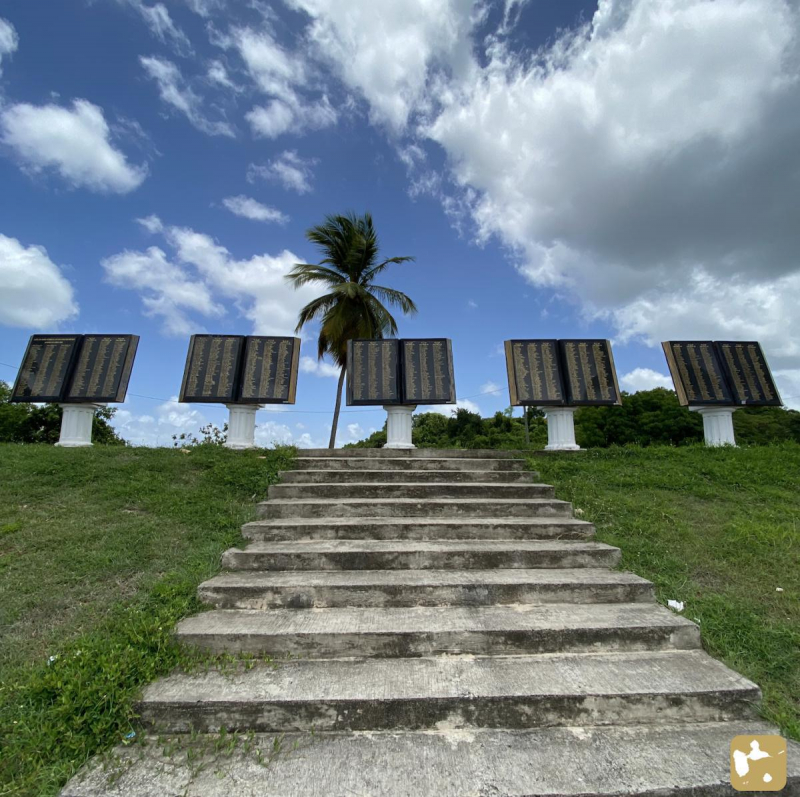
Photo: myislandapp.com Video: Jeff Fidelin






